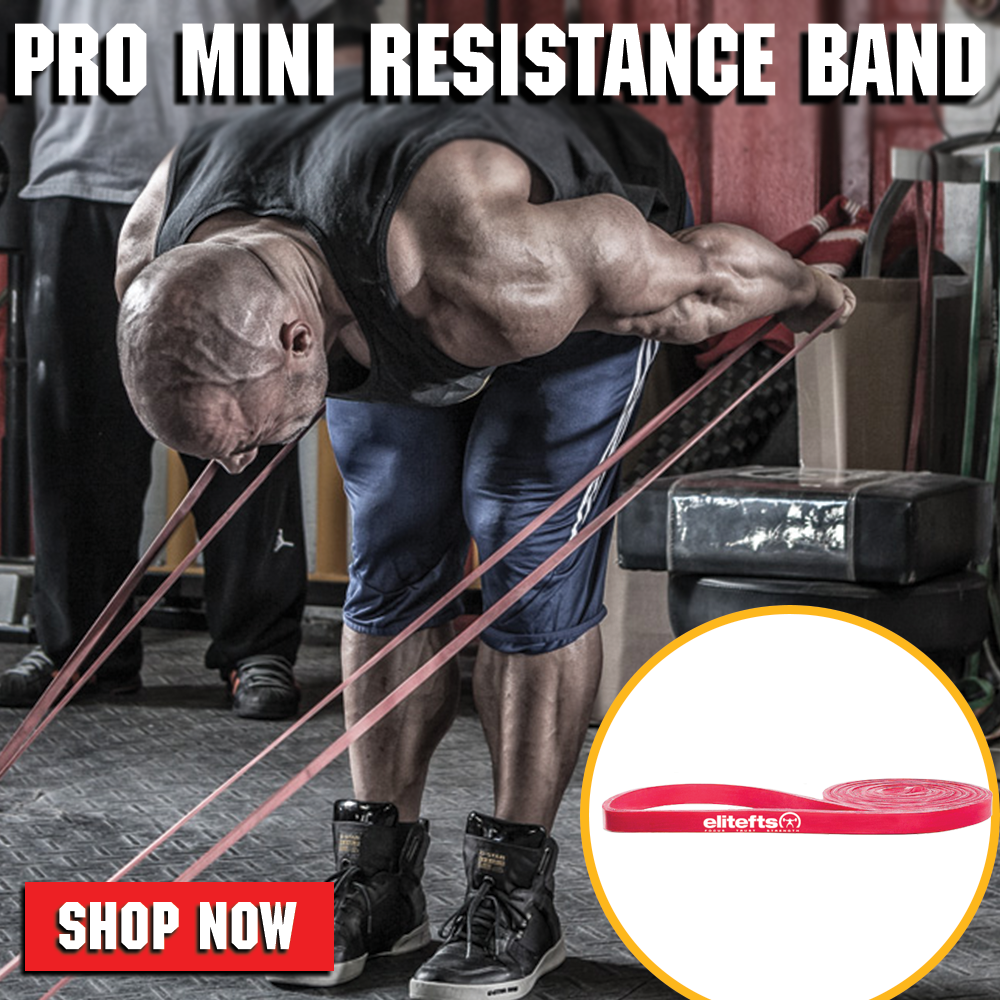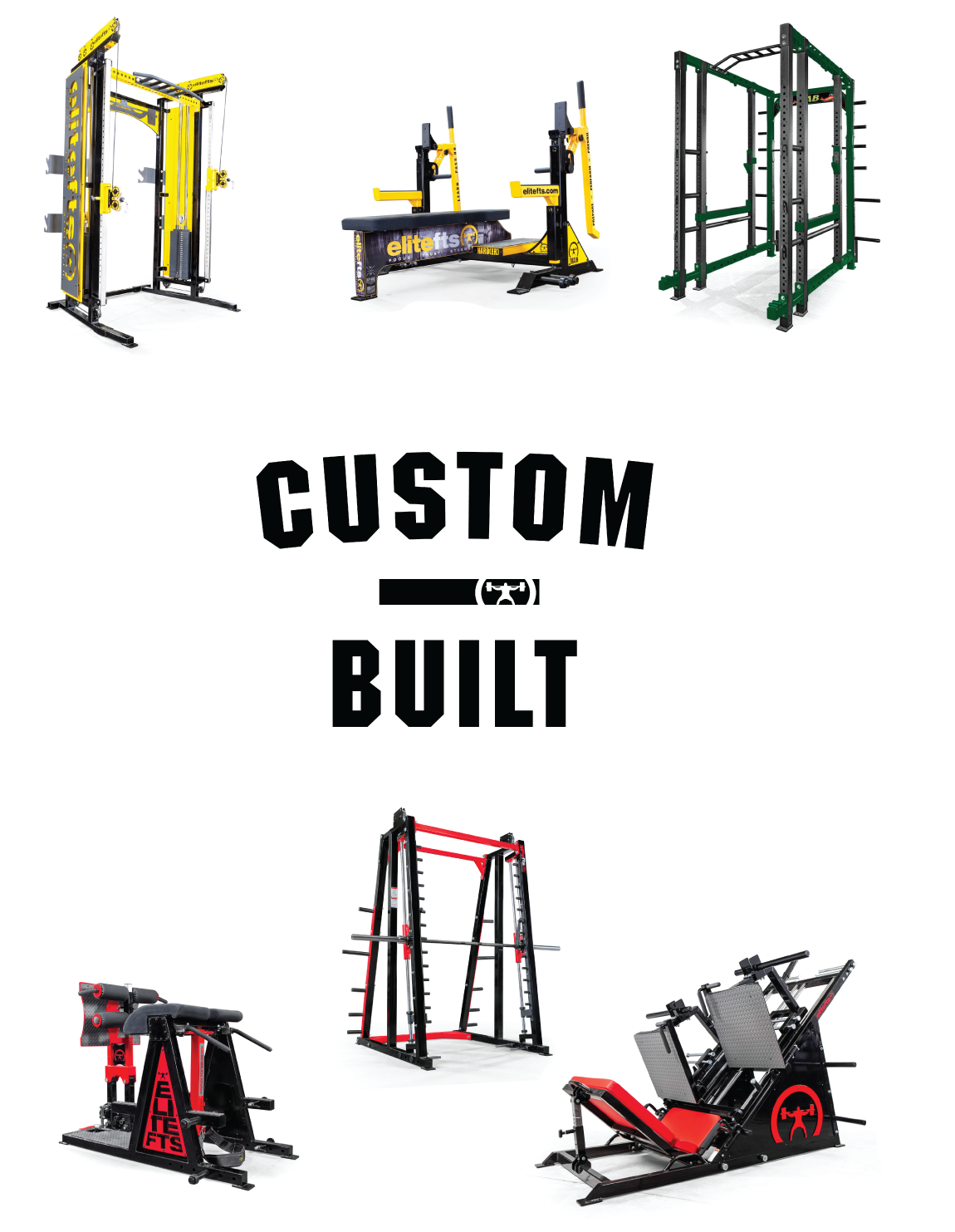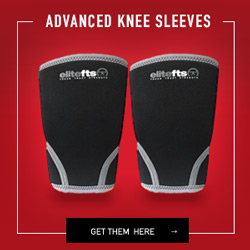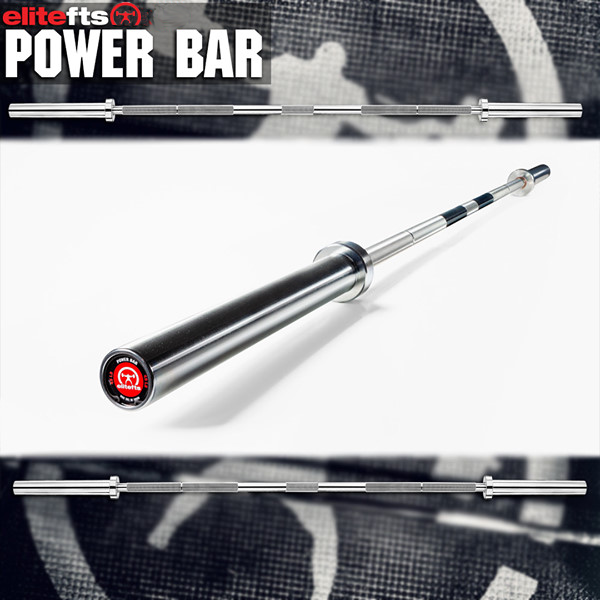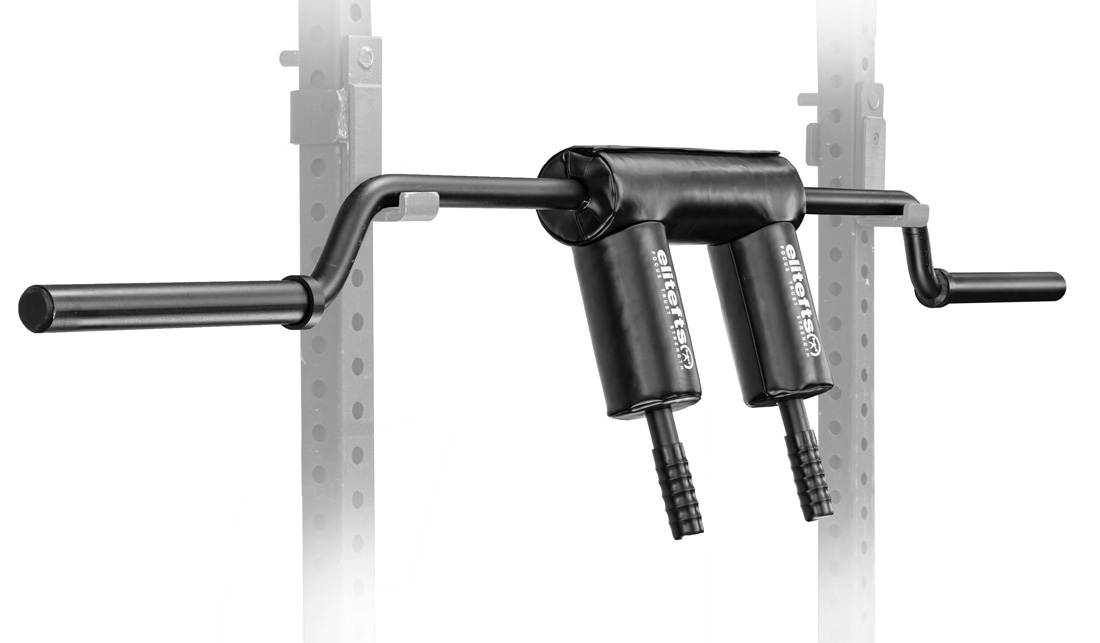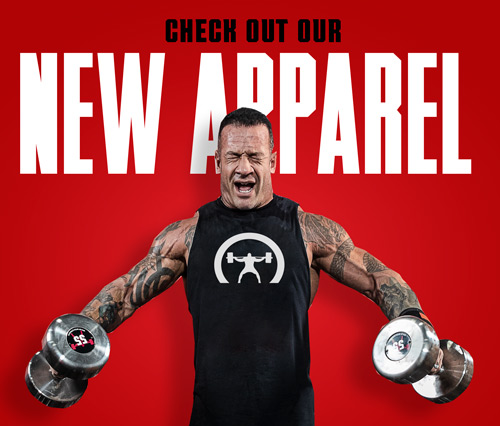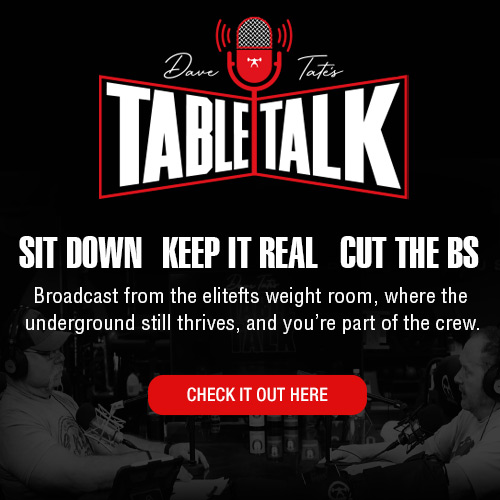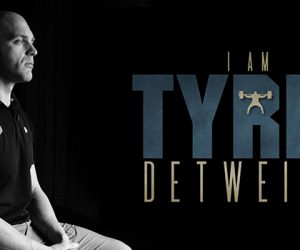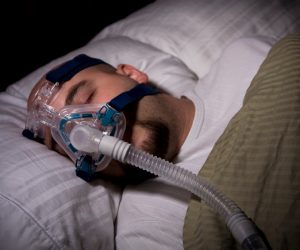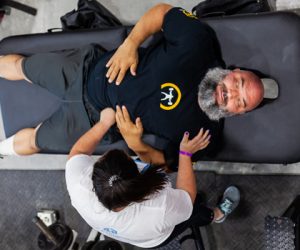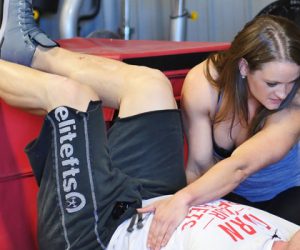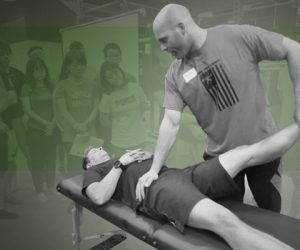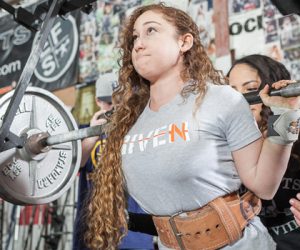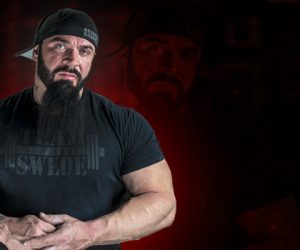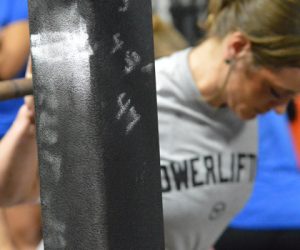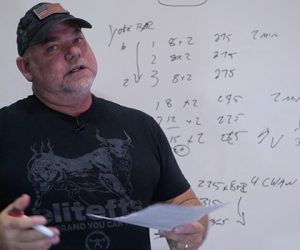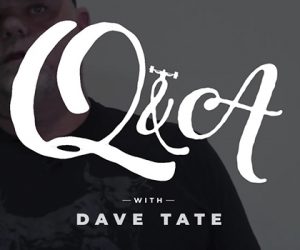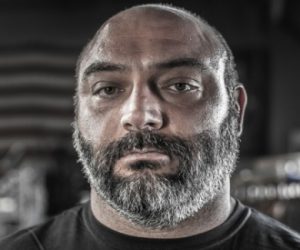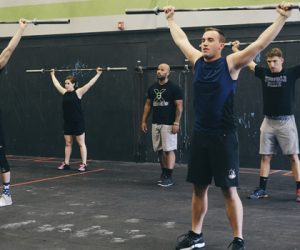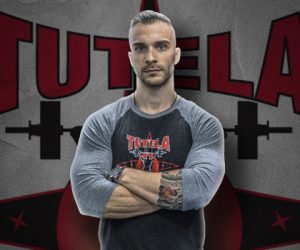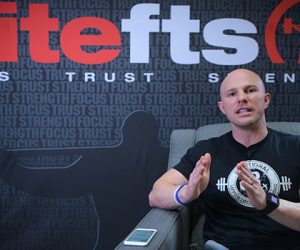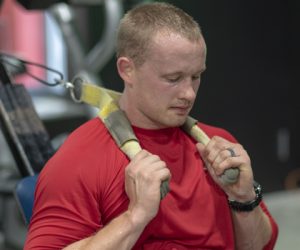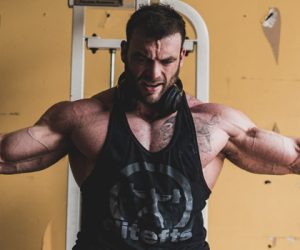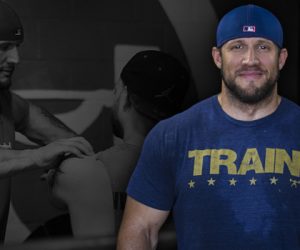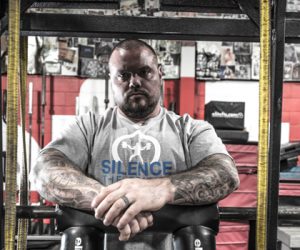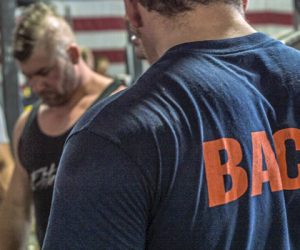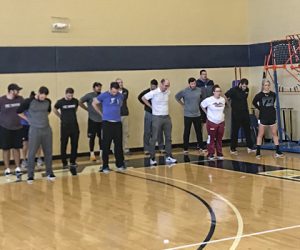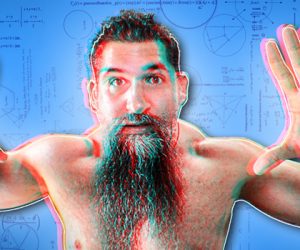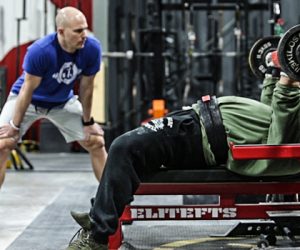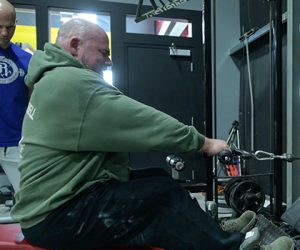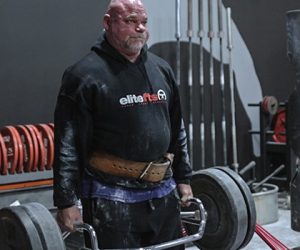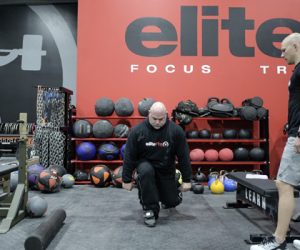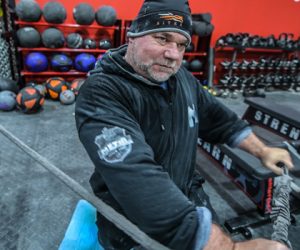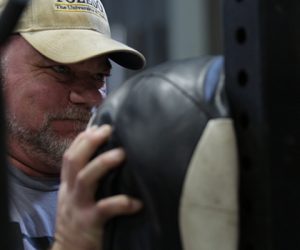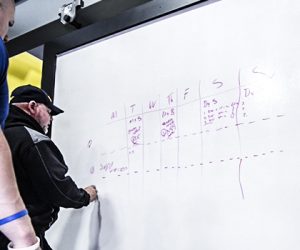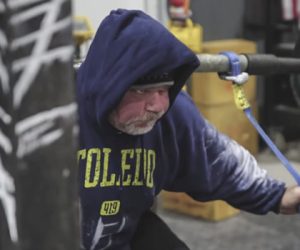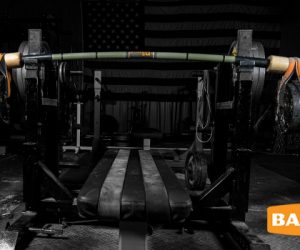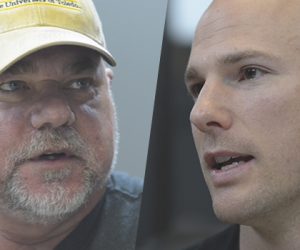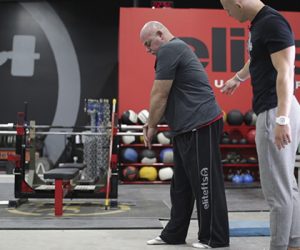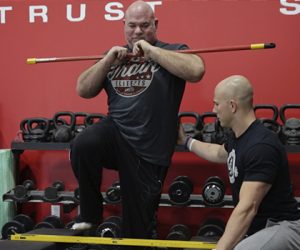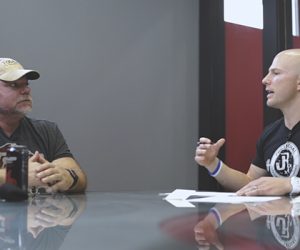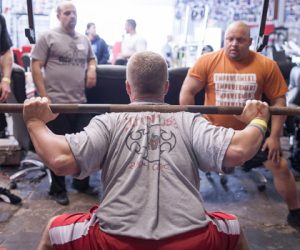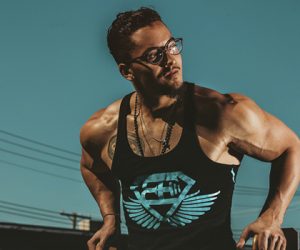WATCH: I am Dr. Tyrel Detweiler
Meet Dr. Tyrel Detweiler, a former college football player-turned-chiropractor who opened Hybrid Performance Group in Columbus, Ohio. Hybrid Performance Group is a multi-disciplinary clinic that offers chiropractic and physical therapies for athletes and active people.
Choking on My Own Face — The Diagnosis
Because it’s a sleep study, and not, say a cat scan, I didn’t expect my doctor to get all solemn, take a deep breath, and ask me to “sit down” before delivering the news.
Troubleshooting Strength Injuries: Redefining Injury
Most strength athletes either take matters into their own hands or seek advice from other lifters to rehab and troubleshooting an injury. Read that again. If I’m describing you, this series is for you.
A Basic Lifting Skill Review: Grip Strength
Every seasoned lifter appreciates how easy it is to lose simple habits in pursuit of getting stronger. One such habit: Getting a good grip.
Choking on My Own Face
In recent months, my fiancée noticed long pauses between breaths while I’m asleep, followed by gasping for air. Not good. If it’s like everything else in my life, this major CPAP milestone should make for a good story. Plus, my readers really seem to enjoy it when I suffer.
Why Big Air Is the Key to a Bigger Total
Imagine that you are on a team at work in which each individual had his or her own unique duties and tasks. What happens if someone doesn’t show up to work?
The Intent of Recovery
Intelligent training does NOT need to be pussyfooting around HARD training. It also doesn’t need to be pushing you to a point where you have to “deserve” a rest day. Attending SWIS 2018 and listening to Dr. John Rusin and Christian Thibedeau, I thought it would be great to revisit this topic.
Should Kids Play Youth Football?
I will never tell a parent they are right or wrong for enrolling their child in a contact sport such as football. What I do recommend, however, is that parents ask themselves three important questions before putting their kid into a contact sport.
The Value of Accessory Work
I’m as guilty as anyone when it comes to moving a weight that makes me “feel good” about training, versus doing a movement that requires less weight on the bar because it exposes weakness.
How to Rehab a Fracture When You’re Too Stubborn to Listen
By no means is this article medical or technical advice to anyone on how to keep training through an injury, but instead, it’s a story of how I handled mine. Why? Because I believe that sometimes, guidelines are meant to be broken.
CBD for Lifters — Why, When, and How
In this installment, I will talk a little bit about what I learned from my tour of the Extract Labs facility, from my research of the available scientific data and my thoughts on “why,” “when” and “how” for Cannabidiol, as I understand it.
CBD for Lifters
Committed to doing a few full-power meets before I retire in 2020, I’m searching for some alternative means to deal with the pain related to inflammation. Enter Cannabidiol (CBD).
The Importance of Recovery for Youth Athletes
To all teenage high school athletes, you must learn to respect and take care of your body if you expect to have a long career in any sport. I cannot tell you how many talented individuals I’ve seen who were never able to live up to their potential due to injury.
4 Things Your Body Needs to Stay Symmetrical
As a PT, I made the mistake of letting go of these good habits. By ignoring issues when they arose, I put my body in a compromising state.
WATCH: Max Effort and Dynamic Effort Programming
In this instructional video, Dave discusses the benefits of dynamic effort and max effort training and breaks down the specifics of his programming during his work with Dr. Rusin.
WATCH: Question & Answer Session with Dave Tate
Dave sits down to answer key questions that he received over the course of the Fixing Date Tate Series. Dave discusses everything from his biggest takeaways, to lessons learned, overall project goals, lifestyle changes, and the importance of effectively auto-regulating your own training program.
My RPR Level I Certification Workshop Experience
So, how does this voodoo work? Honestly, I’m not sure. I don’t really care, though, because I know it works and has been a big asset to my training during the past couple of years.
Movement Patterns Beyond One Plane
If you’re looking a little shifty, if you’re feeling aches and pains on your competition movements, if you want a longer shelf life, if you want to feel athletic instead of “locked in” all of the time, finish your sessions with this. I promise you’ll move and feel better.
Make Recovery Great Again
Your ability to recover is arguably one of the most misunderstood and undervalued aspects of strength and conditioning. As a goal oriented and driven lifter (possibly Type A too), avoid these common pitfalls.
Minimizing Pain for the Active Meathead
Still want to play softball, play basketball, practice martial arts, hike, bike, and swim? Although these things are extremely fun and I highly recommend them for mostly everyone, they can certainly take their toll on your body, especially when combined with hard training.
WATCH: Rapid Fire Table Talk with Dr. John Rusin
Over half an hour of non-stop Q&A, responding directly to questions from elitefts readers.
It's Time to Recover
Time is the multiplier that turns a tiny crack on a newly paved road into a pothole or a single tree into a forest. Here are a few tips to reduce stress on the body and to better prepare yourself to have more in the tank for your training.
The Best Advice I Can Give to Future Physical Therapists
If you want to make a career out of working with strength athletes, there’s one thing that’s more important than everything else.
How to Heal Any Injury Overnight: Safely and Effectively Training the In...
Day by day, week by week, here is how you can deal with the quickly-changing and very challenging aspects of getting over an injury.
Stop Doing That, Start Doing This: Shoulder Warm-Up Education
Let’s go over three shoulder pre-training movements that you are probably doing that you shouldn’t be, then let’s give you some better alternatives.
Training, Open-Heart Surgery, and the Rehabilitation Process
While I wait for my new heart, CT Fletcher’s updates and posts about his recent heart transplant have me thinking about the recovery process.
Reflexive Performance Reset: An Athlete-Based Model
The practitioner-based model is an overworked, overburdened system that leads to scarcity problems and a largely insufficient amount of time spent serving those in need of the services. RPR overcomes every downfall of this model.
WATCH: The Three Best Recovery Tools
It doesn’t matter how hard you train if you don’t recover. Clint has used a lot of different tools to help with recovery, and these are the ones he relies on most often.
WATCH: Fixing Dave Tate — Implementing the Upper Body Training Adjustmen...
Putting Dr. Rusin’s new plan to the test, this video shows a full session of Dave’s revised upper body training days.
The Second Phase of Injury: Changing the Plan
I needed to know I wasn’t going crazy for wanting to know where things were scarring down, and I needed to know what to expect based on the injury itself. So I broke the mold a bit.
3 Ways to Better Utilize Compression Floss Bands
Whatever you want to call this tool (compression tape, floss band, voodoo bands, or something else) it can be incredibly useful in ways often overlooked.
WATCH: Fixing Dave Tate — Adjustments to Upper Body Training for Phase 3
With two phases of training complete, the upper body training days must now be adjusted to continue Dave’s progress. This is the new plan.
WATCH: Fixing Dave Tate — Implementing the Lower Body Training Adjustmen...
Dr. Rusin already explained the alterations to Dave’s program after the first two phases. Now it’s time to see them in action.
Optimizing Your Pre-Training Routine: The Five Stages of PTR
The sequencing and staging of your PTR is key. The exercises work synergistically, and their individual effectiveness is secondary to their combined effect.
The Acute Phase of Injury: What Just Happened?
Once you’ve started the waiting game and it has sunk in you’re out of training for a while, there are definite ways to set yourself up for success. This is something I’m currently experiencing myself after tearing the adductor longus tendon from my pelvis.
WATCH: Fixing Dave Tate — Adjustments to Lower Body Training Days for Ph...
Now that Dr. Rusin and Dave checked in and reviewed the previous progress, it’s time to make some changes to both the max effort and dynamic effort lower body training days.
WATCH: Fixing Dave Tate — The 10-Week Update Discussion
Dr. Rusin returns to the elitefts headquarters to get an update on Dave’s progress through two training phases.
WATCH: Fixing Dave Tate — The Dynamic Warm-Up Sequences for Upper Body a...
Dr. Rusin has covered the purpose of the six-phase dynamic warm-up sequence. Now it’s time to dig into the specific movements in each sequence and learn proper execution.
WATCH: Fixing Dave Tate — Programming the Six-Phase Dynamic Warm-Up Sequ...
The goal is to rebuild Dave’s foundational movement patterns, and the first step is to begin each training session with one of two 15-minute sequences. Here’s the method behind the madness.
Fixing Your Feet: Integration and Loading
After addressing internal tibial rotation and stability and strength of the intrinsic foot musculature, we can now look at hip internal rotation, knee valgus, and exercises for progression.
WATCH: Fixing Dave Tate — Observing Dave's Current Training Capabil...
To gain a greater understanding of Dave’s current capabilities, Dr. Rusin watches a full training session of six movements.
Four Simple Mistakes to Avoid to Stay Injury-Free
These are what I’d consider the biggest mistakes in letting injury dictate your ability to train.
WATCH: BandBell Equipment Demonstration with Founder Jim Seitzer
By explaining the concept of Oscillating Kinetic Energy and demonstrating the setup, Jim gives you everything you need to know to get the most out of the Bamboo, Earthquake, and E-Maxx bars.
WATCH: Fixing Dave Tate — The Three Areas of Focus Discovered During Ini...
With the discovery phase nearly complete, Dr. Rusin has identified three key areas that will be imperative for Dave moving forward — hip stability, posterior chain upper quadrant stability/thoracic spine cage mobility, and program formation.
Tissue Load vs. Tissue Capacity: Increasing Tissue Capacity While Alteri...
This second article of the series discusses additional loading concepts, training considerations, and rehabilitation protocols for increasing tissue capacity while maintaining or decreasing training load.
WATCH: Fixing Dave Tate — Orthopedic Evaluation
Whereas the previous screen was intended to identify red flags, this assessment will consist of clinically-based testing to produce both a medical diagnosis and a functional movement capacity diagnosis.
Back to the Platform After Injury: David LaMartina's Lessons from t...
There are so many layers wrapped up in recovery and getting back to competition. These are the key points that Dave had to embrace if he wanted to keep training for the next 10 years.
WATCH: Fixing Dave Tate — Movement Screening
The initial assessment is complete and it’s time for some hands-on evaluation of Dave’s movement, using these seven key movements. The compensation patterns and pain indicators observed in this step will be used in the next phase of the process.
Tissue Load vs. Tissue Capacity: A Key to Injury Recovery and Prevention
One of the most common causes of injury is accumulation of load on a tissue, tendon, or ligament that exceeds that tissue, tendon, or ligament’s capacity. For optimal rehabilitation and recovery, you need to understand and manage this relationship.
WATCH: Fixing Dave Tate — Initial Assessment with Dr. John Rusin
Years of pushing his body to the limit has left Dave with two hip replacements, numerous shoulder surgeries, more injuries than he can recall, constant daily pain, and restricted movement. It’s time for a change.
The B.T.H. Program — Three-Week Jump Start Phase
The other day I was sitting in my office working on the 2006 marketing plan and in busts Jim with a huge grin on his face and a handful of reports.
Back to the Platform After Injury: The Three Main Components of David La...
In order to get to the point of actually getting better and taking rehab seriously, a lifter must be willing to shift from short-term to long-term focus. Here’s what we did and how I think most rehab for strength athletes should be structured.
Increase Muscle Mass with Massage
If you’re looking for a way to restore muscle function and promote muscle growth, a trip to the massage table may be the answer.
Revisiting Tonic and Phasic Muscles for Increased Performance and Position
There may be a strength discrepancy between your anterior and posterior chain, but are you sure this isn’t because some muscles are stuck doing a job they weren’t originally intended to do, in a position that isn’t optimal?
Back to the Platform After Injury: The First Steps
Dave LaMartina is one of the hardest working lifters I’ve met, and has proven over many years that he is willing to train through just about anything. After significant injury led to him stepping off the platform, he reached out to me, and this is how he came back.
Is Inflammation the Bad Guy?
Inflammation is your body’s biological response to harmful stimuli, which in this case is the damage induced to your muscles from training. But trying to ward it off with NSAIDs and ice may be a mistake.
Yoga for the Serious Strength Athlete
This practice is useful for avoiding development of dangerous muscle imbalances, muscle tears, and joint impingements — but that’s just the start of what it can do for your training and your life.


